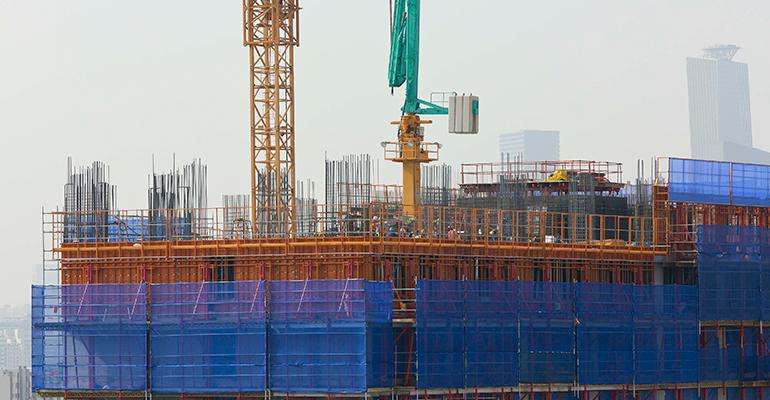New construction is hurting the hotel business in markets across the country.
“Record-breaking occupancy rates from last year will slightly decline in 2017 and 2018,” says Jan Freitag, senior vice president for STR Global, a firm that tracks hotel market data. “There are a ton of markets where occupancy rates have already declined.”
The worst hotel markets, like the Oklahoma area, have been hurt by the collapse in oil prices. But even places with strong demand for hotels, including New York City and Austin, Texas, have been weighed down by competition from new construction.
Overall, the hotel business will have a pretty good year in 2017, according to top researchers. Guests are anticipated to stay roughly 1.2 billion nights in U.S. hotels in 2017—the highest total ever, even higher than in 2016, which also broke records. However, developers will also open new hotel rooms, increasing the available supply to 1.8 billion room nights. That will damage hotel markets—and some will feel the hit more than others.
In the Oklahoma area, for example, only 48.0 percent of the hotel rooms were occupied on average over the year that ended January 2017. That’s down 8.2 percent from the year before. That makes Oklahoma the market with the lowest hotel occupancy rate in the country, according to STR.
Wyoming, North Dakota and Pennsylvania outside of major cities also placed on the bottom of the list of places with the lowest average hotel occupancy rates. These are all places that attracted a huge number of new workers during the boom in fracking.
“Now fracking is much less active, drilling is curtailed and you have all these hotel room standing half empty,” says Freitag. Developers started construction on a large number of new hotel rooms during the fracking boom. The last of those hotel rooms are still coming on the market. In Oklahoma, new hotels openings will increase the inventory of hotel beds by 3.8 percent in 2017.
That puts the Oklahoma area—one of the worst areas in the country for hotels—in the Top 20 markets for new supply in 2017.
Austin, Texas
Developers will open more new hotel rooms in Austin, Texas, than in any other U.S. city in 2016, according to research firm the CoStar Group. Austin’s new hotel projects are heavily concentrated in or near its downtown, especially near Austin’s convention center. A 1,000-room JW Marriott delivered there in 2015, and a 1,000-room Fairmont Hotel is underway and due to open this year, according to CoStar.
“This theme of hotel developers choosing downtown areas across the country is more pronounced this cycle than in previous ones,” says Jeff Myers, managing consultant for CoStar Portfolio Strategy.
All the new construction in Austin has already begun to wear on the city’s hotel sector. New development increased the inventory of hotel rooms by 6.2 percent over the year ending in January—the third largest increase in the nation, according to STR.
“Hotel fundamentals in downtowns with a lot of construction may contain supply-side risk that could cause occupancies to soften and room rate growth to slow.”
Because of the new supply, the average percentage of occupied rooms fell by 2.0 percent in Austin over the year that ended in January. The drop in occupancies would have been much worse if not for the strong demand for hotel rooms.
Austin was still fairly healthy for hotels in 2016, with an average occupancy rate of 72.1 percent over the 12 months that ended in January.
New York City
The percentage of occupied hotel rooms grew in New York City over the last year—despite the best efforts of hotel developers to flood the market with new rooms.
New York still had the highest average occupancy rate—at 86.0 percent—of any of the markets tracked by STR over the year that ended in January. That’s up 0.7 percent from the year before. Occupancies improved even though developers in New York City increased the total inventory of hotel rooms by 5.2 percent over the same period.

